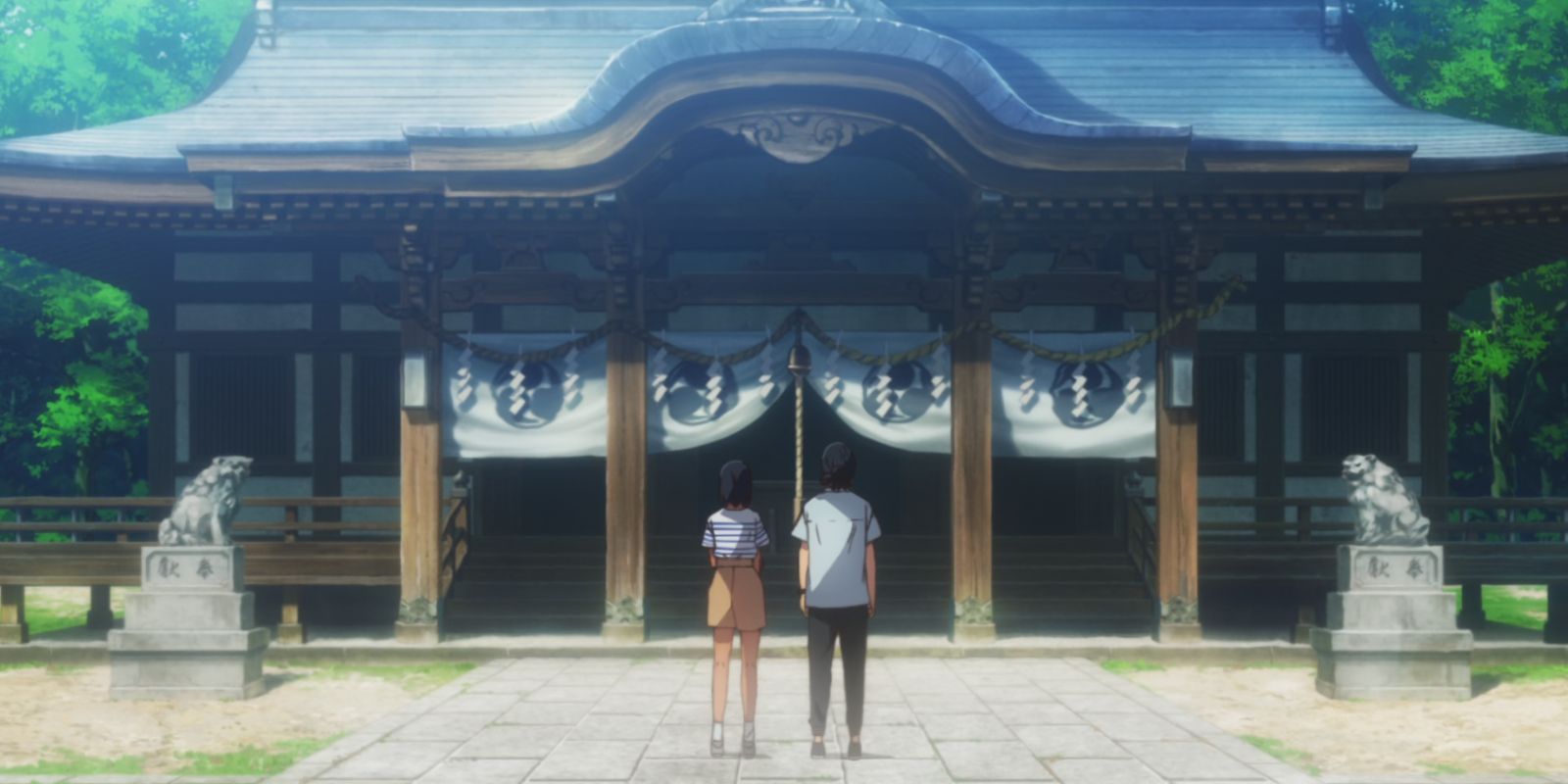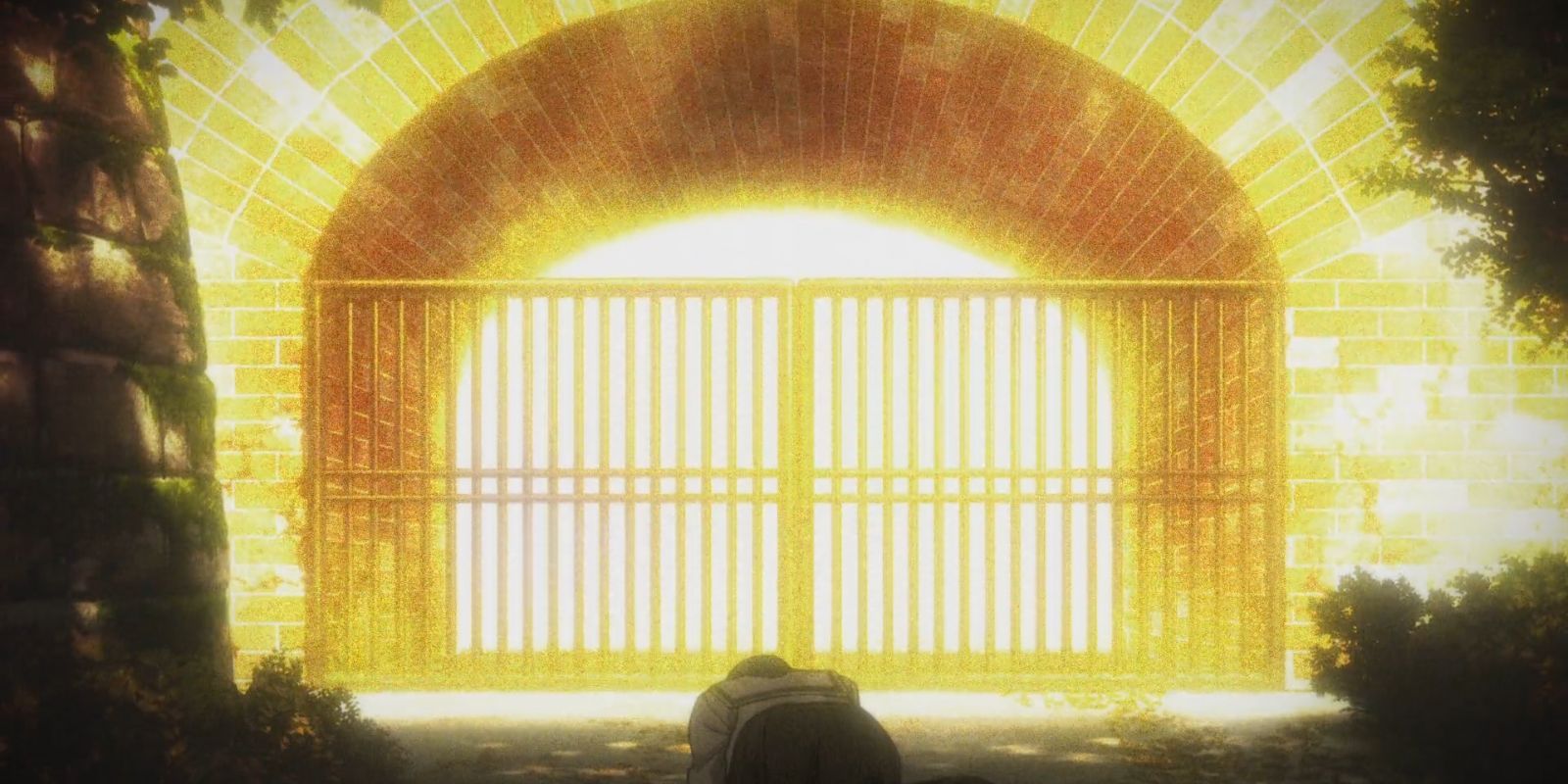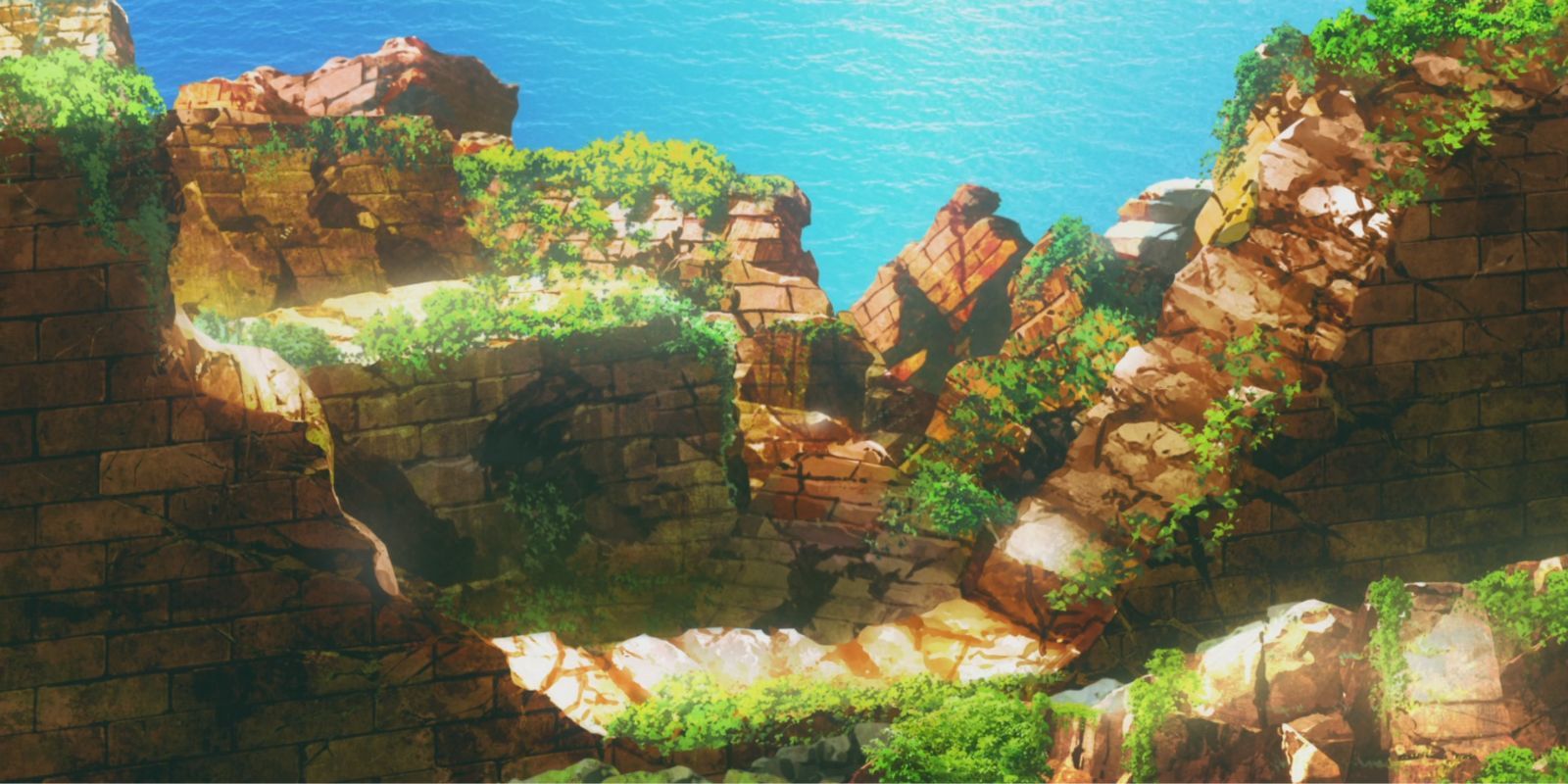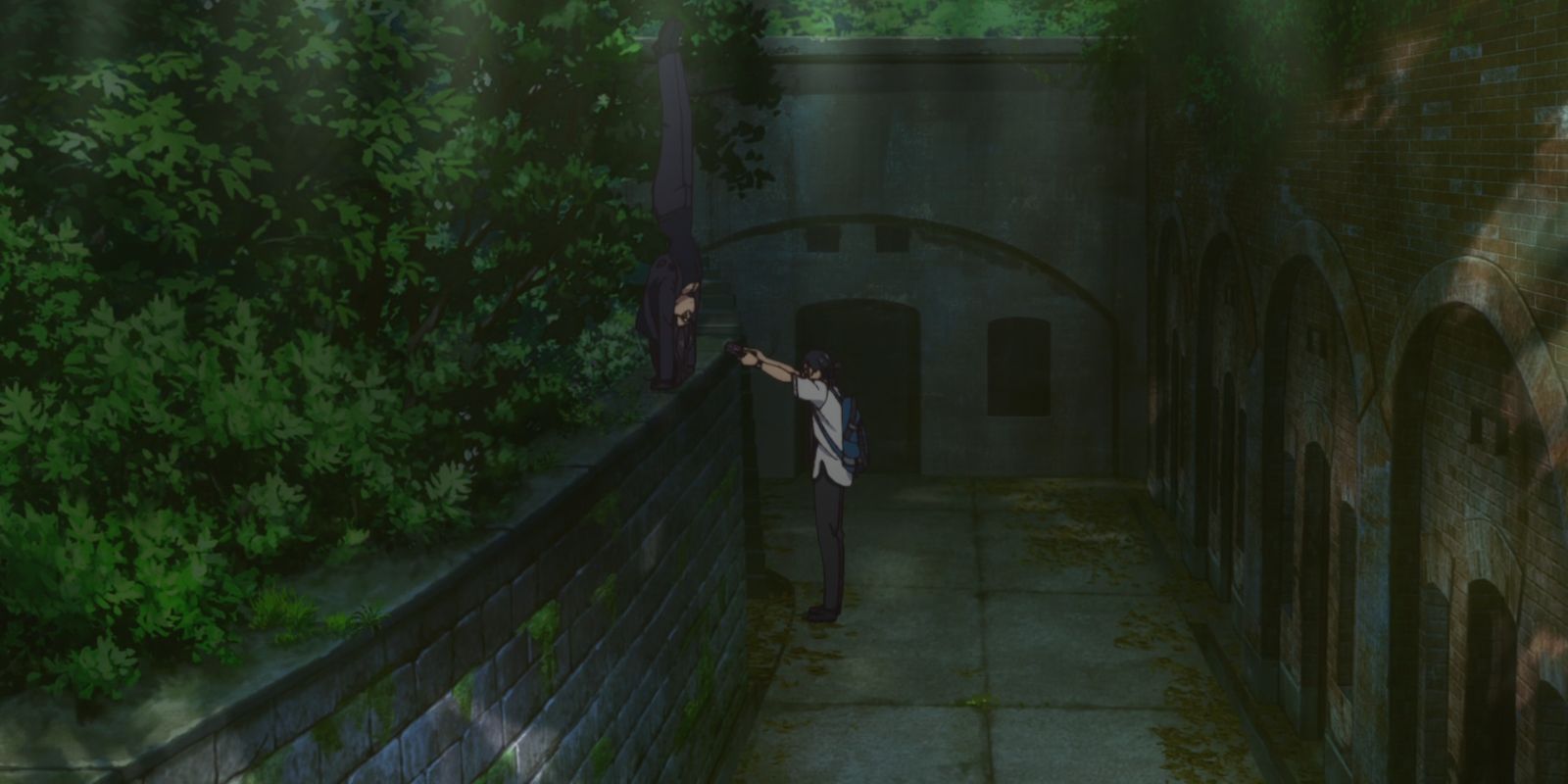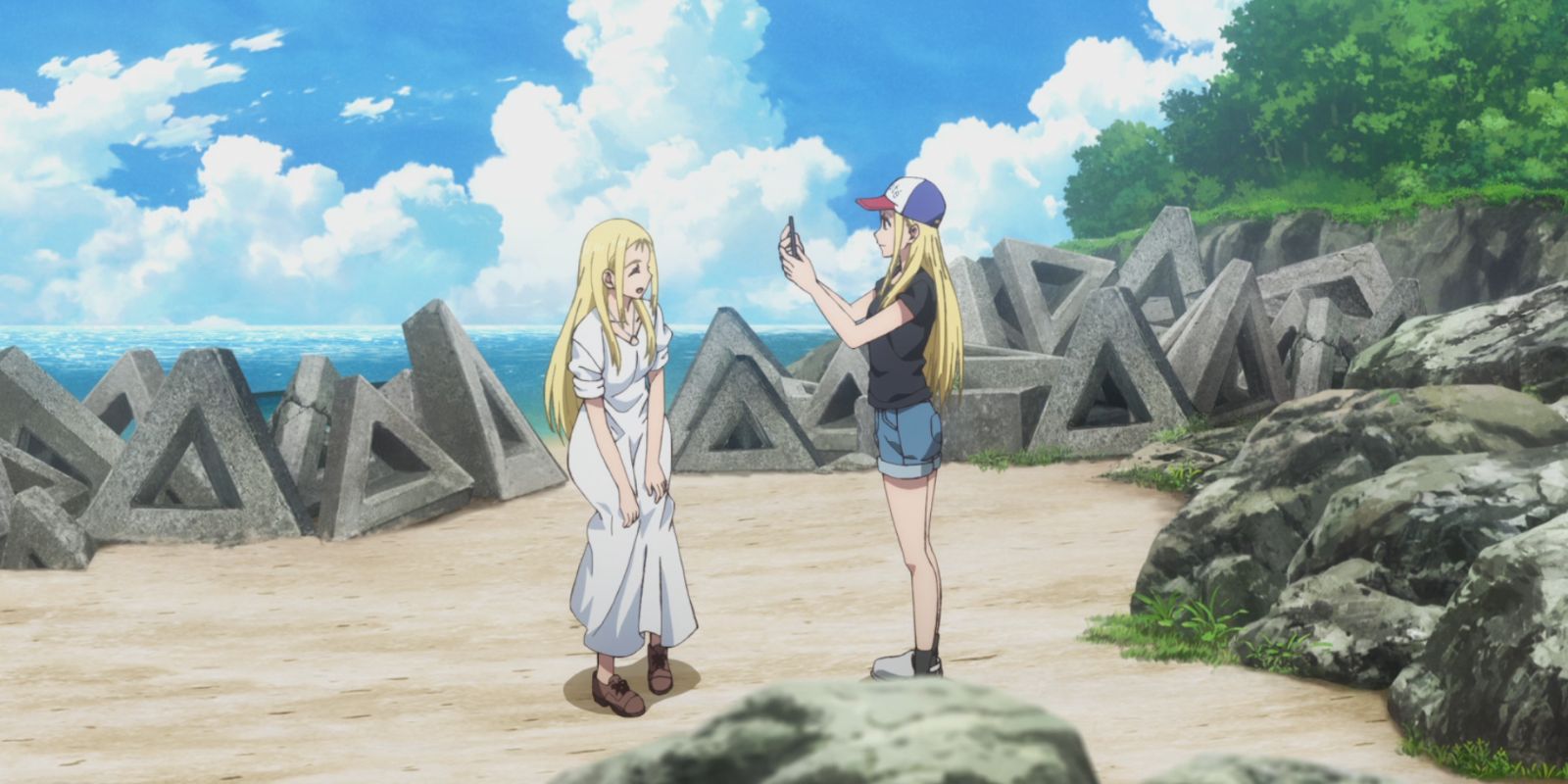Itogashima Island’s Inspiration & Locations
Summertime Rendering’s island landscape features many beautiful environments. From the cozy and close beach town to the jungle forest ruins and the temple summit where the summer festival is held. Hitogashima, while a fictional location, is based on Tomogashima Island, just off of Wakayama, Japan.
The series follows Shinpei Arijo, who is called from Tokyo to return to his home in Hitogashima for the funeral of his adoptive sister Ushio. While her death is presented as an accidental drowning, strangle marks around her neck convince Shinpei she was murdered. Along with her ghost and Ushio’s little sister Mio, they work to find out what really happened in the hopes of saving their beautiful island from a mysterious darkness.
Hiruko – The Hito Shrine
Tomogashima is a cluster of four islands located within the inland Sea of Japan. While Tomogashima doesn’t have a bustling populated town as featured in Summertime Rendering, it does share the eerie vibe felt in the show. Many backgrounds used in the anime are exact locations from Tomogashima. The islands also have a history of being a significant military fortification during the Meiji Period and have been occupied in the past by Buddhist monks for the practice of Shugendō.
The tensho shrine in real life is significantly smaller than Summertime Rendering’s adaptation of it. The location of the shrine is called Hiruko in the anime. Shinpei and Mio travel to the shrine in Episode 1 to attempt to cleanse themselves of the shadow sickness.
Where Ryuunosuke Was Murdered
The gate seen in Hizuru’s flashback of her brother Ryuunosuke’s dead corpse is based on actual locations on Tomogashima. These gates make up the entrances to the eerie abandoned military tunnels of the gun battery fortifications on the island. Many visitors consider these tunnels to be haunted.
Ruined Military Fortresses
Scattered all over Tomogashima are the ruins of destroyed navy military fortresses constructed during Japan’s Meiji Period from 1868 to 1912. The same scenery used in the anime can be found all over the internet. There are many more ruined military structures all over Tomogashima Island that travelers may visit.
Ginjirou and Hizuru’s Secret Base
Ginjirou and Hizuru’s strange mysterious base features the military tunnels of Gun Battery #3 on Tomogashima. Many call it “the castle in the sky.” Like the above, the scenery used in Summertime Rendering is the exact scenery found in real life’s Tomogashima’s abandoned military tunnels. There were five gun batteries built on Tomogashima. Gun Battery #3, shown in Summertime Rendering, is the largest of the five.
Hitogashima’s Beach Tetrahedrons
In several scenes in Summertime Rendering, there are beach obstacles that look like stone triangles. These were the tetrahedron anti-landing obstacles used in World War II to prevent sea vehicles from landing ashore. These structures are famous for their usage during WWII’s Juno Beach.
Getting To Tomogashima Island
There are plenty of beautiful locations on Tomogashima Island that are not yet featured in Summertime Rendering. This includes the lighthouse, the different beaches, Otaki Fudomeioh, the camping grounds, and the hiking spots to the north of the island. Traveling to Tomogashima Island is fairly straightforward. Taking the Nankai Line from Namba Station in Osaka to Wakayamashi, and then the Nankai Kada Line to Kada will get you to the ferry at Kada Port. From there, travelers may take the ferry to Tomogashima Island.
